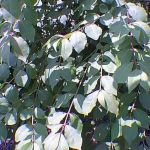| Common Name: |
Fish Wood |
| Other Names: |
Arrowwood, Bitter Ash, Burning Bush, Indian Arrowroot, Indian Arrow-wood, Spindle Tree, Strawberry Tree, Wahoo |
| Botanical Name: |
Euonymus atropurpureus |
| Genus: |
Euonymus |
| Family: |
Celastraceae |
| Cultivation: |
Well-drained soil in sun or partial shade. Thin out shoots in late winter to maintain shape. Euonymus europaeus is prone to scale insects and aphids. |
| Propagation: |
By seed sown when ripe; by greenwood cuttings in summer. Seed needs stratifying and is viable for 2 years. |
| Harvest: |
Bark is collected in autumn and dried for use in decoctions, tablets, and tinctures. |
| Native Location: |
Central and Eastern N America |
| Height: |
2-8m (6-25ft) |
| Width: |
1.2-3m (4-10ft) |
| Hardiness: |
Z4-9 |
| Parts Used: |
Trunk, Root Bark, Fruit, Bark of stems and roots |
| Properties: |
An acrid, bitter herb that stimulates the gall bladder and circulatory system, has diuretic and laxative effects, and acts as a mild cardiac tonic. |
| Medicinal Uses: |
Internally for constipation and skin eruptions asociated with liver and gall bladder dysfunction. Often combined with Berberis vulgaris (See. barberry), Chionanthus virginicus (See. fringe tree), Pulsatilla vulgaris (See pasque flower), and Taraxacum officinale (See dandelion) for liver and gall bladder disorders.
To treat indigestion and constipation, stimulate the production of bile, and as a tonic. |
| Typical Dose: |
There is no typical dose of wahoo, which is considered too dangerous for use. |
| Possible Side Effects: |
Wahoo is poisonous. Side effects may include severe gastrointestinal distress, bloody diarrhea, circulatory problems, and stupor progressing to unconsciousness. Wahoo contains cardiac glycosides, which can help control irregular heartbeat, reduce the backup of blood and fluid in the body, and increase blood flow through the kidneys, helping to excrete sodium and relieve swelling of body tissues. However, a buildup of cardiac glycosides can occur, especially when the herb is combined with certain medications or other herbs that contain cardiac glycosides, causing arrhythmias, abnormally slow heartbeat, heart failure, and even death. |
| Drug Interactions: |
| Taking wahoo with these drugs may increase the risk of hypokalemia (low levels of potassium in the blood) and/or cardiac glycoside toxicity: |
| Acetazolamide, (Apo-Acetazolamide, Diamox Sequels) |
Azithromycin, (Zithromax) |
Azosemide, (Diat) |
Bumetanide, (Bumex, Burinex) |
Cascara, (Cascara) |
| Chlorothiazide, (Diuril) |
Chlorthalidone, (Apo-Chlorthalidone, Thalitone) |
Clarithromycin, (Biaxin, Biaxin XL) |
Demeclocycline, (Declomycin) |
Digitalis, (Digitek, Lanoxin) |
| Dirithromycin, (Dynabac) |
Docusate and Senna, (Peri-Colace, Senokot-S) |
Doxycycline, (Apo-Doxy, Vibramycin) |
Erythromycin, (Erythrocin, Staticin) |
Ethacrynic Acid, (Edecrin) |
| Etozolin, (Elkapin) |
Furosemide, (Apo-Furosemide, Lasix) |
Hydrochlorothiazide, (Apo-Hydro, Microzide) |
Hydroflumethiazide, (Diucardin, Saluron) |
Indapamide, (Lozol, Nu-Indapamide) |
| Josamycin, (Iosalide, Josamy) |
Mannitol, (Osmitrol, Resectisol) |
Mefruside, (Baycaron) |
Methazolamide, (Apo-Methazolamide, Neptazane) |
Methyclothiazide, (Aquatensen, Enduron) |
| Metolazone, (Mykrox, Zaroxolyn) |
Midecamycin, (Macropen, Midecin) |
Minocycline, (Dynacin, Minocin) |
Olmesartan and Hydrochlorothiazide, (Benicar HCT) |
Oxytretracycline, (Terramycin, Terramycin IM) |
| Polythiazide, (Renese) |
Quinine, (Quinine-Odan) |
Roxithromycin, (Claramid, Roxibeta) |
Spiramycin, (Rovamycine) |
Tetracycline, (Novo-Tetra, Sumycin) |
| Torsemide, (Demadex) |
Trichlormethiazide, (Metatensin, Naqua) |
Troleandomycin, (Tao) |
Urea, (Amino-Cerv, UltraMide) |
Xipamide, (Diurexan, Lumitens) |
|
| Warning: |
All parts, especially fruits and seeds, are harmful if eaten. |
| Disease Effects: |
May worsen inflammatory gastrointestinal ailments by increasing stomach secretions. |
| Supplement Interactions: |
- Increased risk of cardiac glycoside toxicity when used with other herbs that contain cardiac glycosides, such as Black Hellebore, Calotropis, Motherwort and others.
- Increased risk of cardiotoxicity due to potassium depletion when taken with cardioactive herbs, such as Adonis, Digitalis, Lily-of-the-Valley, and Squill.
- Increased risk of potassium depletion when used in conjunction with Horsetail Plant or Licorice.
- Increased risk of potassium depletion when used with other stimulant laxative herbs, such as Black Root, Cascara Sagrada, Castor Oil, and Senna
|
| Bibliography: |
Encyclopedia of Herbs by Deni Brown. Copyright © 1995, 2001 Dorling Kindersley Limited. pg 208
The Essential Herb-Drug-Vitamin Interaction Guide by Geo. T. Grossberg,MD and Barry Fox,PhD Copyright©2007 Barry Fox,PhD. Pp.477-478
|

